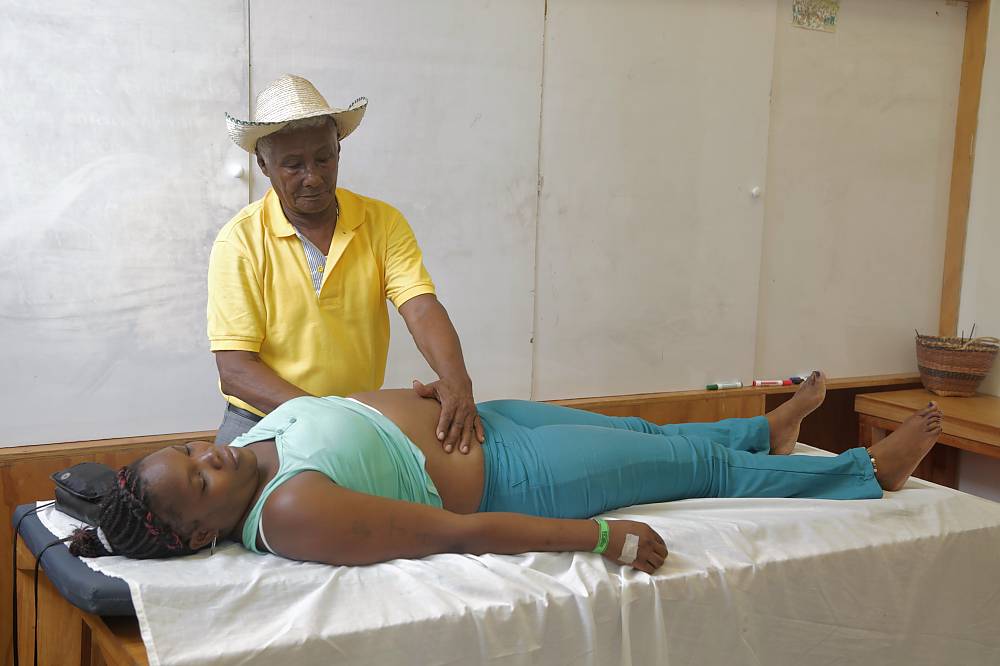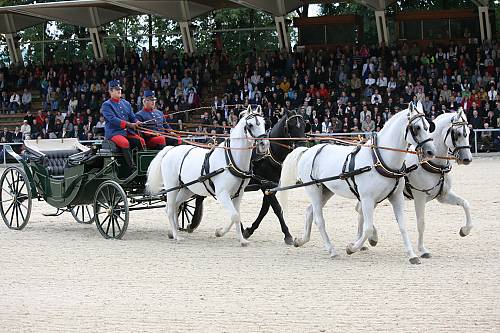Midwifery: knowledge, skills and practices
Midwives are companions and supporters of pregnant women and their families before, during and after birth. Throughout the course of a pregnancy, midwives make home visits, provide guidance and care, and facilitate birth preparation and capacity-building classes. They contribute to the protection of fundamental human rights by transmitting their knowledge to mothers and families. Midwifery is based on evidence-based practices and traditional knowledge, skills and techniques. It varies according to the social, cultural and natural contexts of different communities and countries, and sometimes includes knowledge of traditional medicine and of medicinal plants and herbs. Midwifery also entails specific cultural practices, vocabulary, celebrations and rituals. The related skills and knowledge have been safeguarded, developed and passed on by practising communities for generations, especially within networks of women. Traditional knowledge of midwifery is accumulated through direct experience, observation and interaction with the human body. It is transmitted through oral instruction, observation, participation and peer exchange. In many countries, the practice of midwifery also requires certification, and the related knowledge and skills are transmitted through formal education such as academic learning based on curricula, some of which align with the standards established by the International Confederation of Midwives.
 Slovenia
Slovenia
Midwifery: knowledge, skills and practices
multinational application of Colombia, Cyprus, Germany, Kyrgyzstan, Luxembourg, Nigeria,
Date of Inscription:
Inscribed in 2023 (18.COM) on the Representative List of the Intangible Cultural Heritage of Humanity
Lipizzan horse breeding traditions
Lipizzan horse breeding traditions were initially used to breed horses for the Habsburg imperial court in Vienna, but today the Lipizzan horse plays a special role in the everyday cultural and social life of communities in rural areas. They are included in events, celebrations and festivities such as horse blessings, carnival processions and parades. The horses also play a key role in therapeutic riding and sustainable tourism. The people who work at the state stud farms represent the main bearers of the element, along with therapists, craftspeople, groups of equestrian sports, military traditionalists, local communities and farm visitors. The values, knowledge, skills and practices are transmitted through hands-on experience, seminars and training sessions, as well as during festive and sporting events. The practice is also part of the curricula of certain local primary schools and of all agricultural and vocational schools and agricultural and veterinary universities. Lipizzan horse breeding has united communities for over 450 years, generating a strong sense of shared identity, including through its specialized vocabulary and the close emotional connection between breeders and horses.
Beekeeping in Slovenia, a way of life
In Slovenia, beekeeping is a way of life for many individuals, families and communities, who obtain bee products for food and traditional medicine and use their knowledge and skills to care for the honeybees and the environment. The only subspecies kept in Slovenia is the Carniolan bee. Beekeepers have around 200,000 bee colonies, and with the controlled breeding of queen bees they responsibly ensure the preservation of its valued characteristics: gentleness, yield, excellent orientation and resistance to weather conditions. Bees are kept mostly in wooden apiaries near beekeepers’ homes. Communities express a loving and respectful attitude towards bees, and the related knowledge, skills and practices are shaped by centuries of tradition and transmitted from generation to generation. Beekeepers, who consider bees their teachers and friends as well as symbols of virtue, cleverness and frugality, expand their knowledge and skills through constant research. The importance of beekeeping in Slovenia is reflected in its rich terminology and in academic, literary and folklore texts (with printed works from the eighteenth century onwards disseminating knowledge, prose, poetry and sayings related to beekeeping), art (with the characteristic painted panels and religious and secular motifs on the hives) and architecture (with the construction of traditional apiaries).
 Slovenia
Slovenia
Beekeeping in Slovenia, a way of life
Date of Inscription:
Inscribed in 2022 (17.COM) on the Representative List of the Intangible Cultural Heritage of Humanity
Art of dry stone walling, knowledge and techniques
The art of dry stone walling concerns the knowhow related to making stone constructions by stacking stones upon each other, without using any other materials except sometimes dry soil. Dry stone structures are spread across most rural areas – mainly in steep terrains – both inside and outside inhabited spaces, though they are not unknown in urban areas. The stability of the structures is ensured through the careful selection and placement of the stones, and dry-stone structures have shaped numerous, diverse landscapes, forming various modes of dwelling, farming and husbandry. Such structures testify to the methods and practices used by people from prehistory to today to organize their living and working space by optimizing local natural and human resources. They play a vital role in preventing landslides, floods and avalanches, and in combating erosion and desertification of the land, enhancing biodiversity and creating adequate microclimatic conditions for agriculture. The bearers and practitioners include the rural communities where the element is deeply rooted, as well as professionals in the construction business. Dry stone structures are always made in perfect harmony with the environment and the technique exemplifies a harmonious relationship between human beings and nature. The practice is passed down primarily through practical application adapted to the particular conditions of each place.
 Slovenia
Slovenia
Art of dry stone walling, knowledge and techniques
multinational application of
Croatia, Cyprus, Greece, France, Italy, Slovenia, Spain, Switzerland
Date of Inscription:
Inscribed in 2018 (13.COM) on the Representative List of the Intangible Cultural Heritage of Humanity
Bobbin lacemaking in Slovenia
Bobbin lacemaking in Slovenia is a handicraft skill of making lace by crossing and twisting thread wound on special wooden sticks known as bobbins. Using locally recognizable patterns with local names, bobbin lacemakers make lace in bands or in finished shapes. The bobbin lacemaking process follows a specific pattern: a drawing on paper is attached to a cylinder pillow in a wicker basket or on a wooden base. The lace is used to adorn clothing and fashion accessories, church and home textiles and representative spaces, but bobbin lacemaking also serves as an inspiration for artistic creations in fields such as the contemporary visual arts, design, architecture and culinary design. It is the creative expression of all those involved in the process, including the pattern designer and the bobbin lacemaker. Bobbin lacemaking has notable therapeutic functions, and is an ecologically clean and sustainability-oriented activity. There are around 120 bobbin lacemaking societies, sections and groups in Slovenia today, which include trained bobbin lacemakers and those who are still learning. Bearers mostly comprise women, and the knowledge and skills related to the practice are most frequently passed down from grandmothers to grandchildren: the socializing of female bobbin lacemakers in neighbourhood communities is also key for transmitting related knowledge and skills.
 Slovenia
Slovenia
Date of Inscription:
Inscribed in 2018 (13.COM) on the Representative List of the Intangible Cultural Heritage of Humanity
Door-to-door rounds of Kurenti
Door-to-door rounds of Kurenti is a Shrovetide custom practised from Candlemas (2 February) to Ash Wednesday. Kurenti practise their rounds through villages and nowadays also through the town of Ptuj. Groups consisting of Kurenti and one or more devils run from house to house, form a circle in the yard and jump around the owners. According to their beliefs, the noisy bell-ringing and brandishing of the wooden stick chase everything evil away and bring happiness to those they visit. Men, women and children are actively involved in all activities associated with the custom. Kurenti normally form groups, and some establish associations. One important bearer is the Federation of Kurenti Associations, which acts as the umbrella organization. The practice helps strengthen interpersonal bonds and is key to the regional identity of the communities concerned. Kindergartens and elementary schools assist in the safeguarding process, and some formal education courses and informal workshops help maintain respect for the practice. Related knowledge and skills are most commonly transmitted within the family, but youngsters also learn from elderly members of the groups they are part of and schools and museums play an important role by organizing activities, workshops and contests.
 Slovenia
Slovenia
Door-to-door rounds of Kurenti
Date of Inscription:
Inscribed in 2017 (12.COM) on the Representative List of the Intangible Cultural Heritage of Humanity
Škofja Loka passion play
In Škofja Loka, Slovenia, a folk play performed as a procession takes place in the streets of the town’s medieval centre during Lent and Easter involving more than 900 local performers. The Škofja Loka Passion Play, based on the ancient works of a Capuchin monk, demonstrates 20 scenes of the stations of the cross and others from the Old Testament and New Testament. Performed in the dialect of the time it was written, the play takes place at a series of locations. In addition to the actors, 400 other volunteers from the community participate in the play’s production. Due to the complexity involved, the Škofja Loka Passion Play is only performed every six years. While it is considered to be an important part of local identity, the play also contributes to social cohesion giving residents involved an opportunity to connnect with one other and feel like they are contributing to their community. Knowledge and skills associated with the practice of the play are transmitted from older to younger generations by families who participate, and craftspeople assisting in the play’s production who host classes passing on know-how to others. The Passion Play is also included in the curricula of local schools.
 Slovenia
Slovenia
Date of Inscription:
Inscribed in 2016 (11.COM) on the Representative List of the Intangible Cultural Heritage of Humanity







